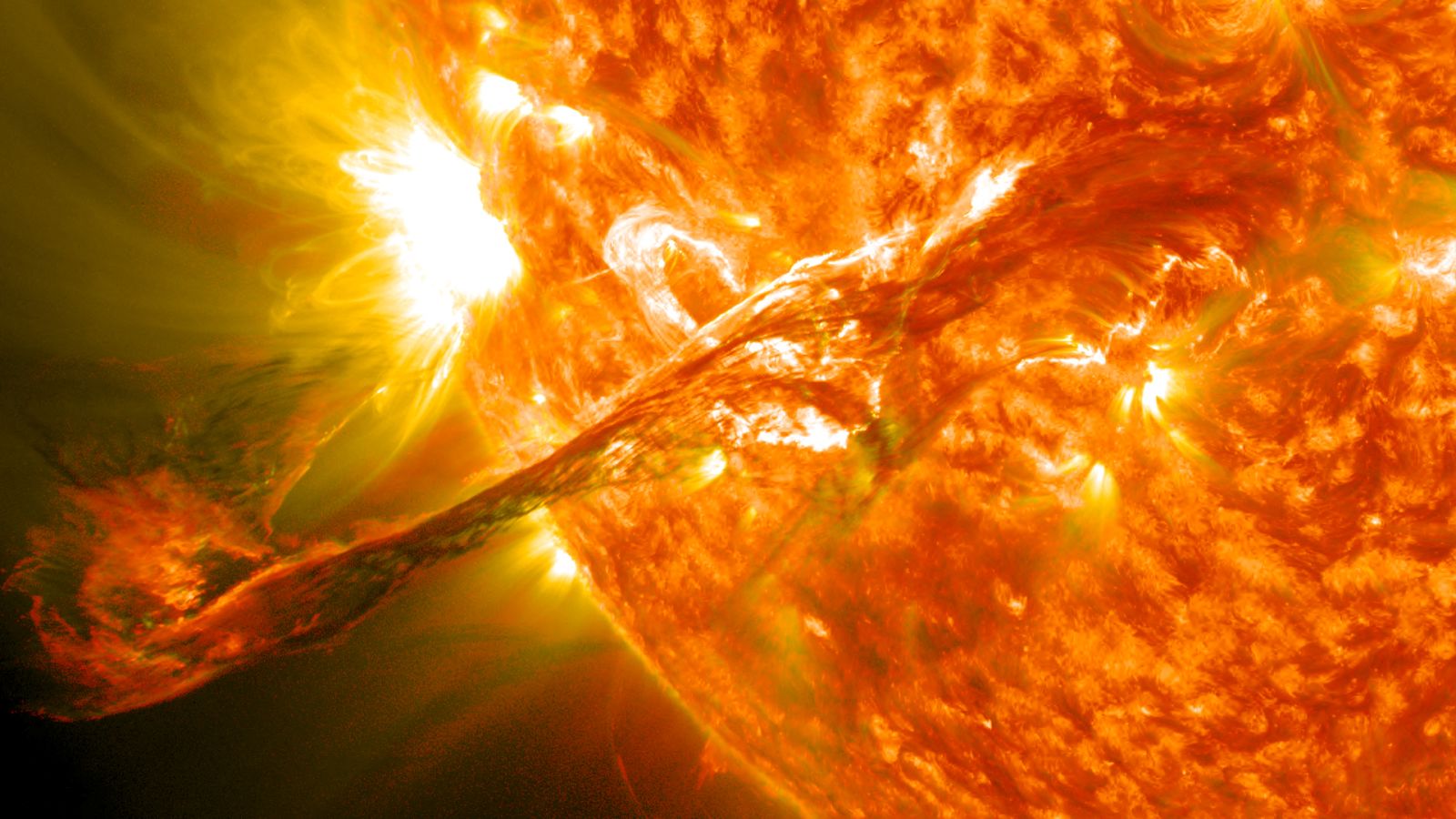Historic solar storm that hit Earth: what you need to know ☀️
Published by Adrien,
Source: Journal of Geophysical Research: Space Physics
Other Languages: FR, DE, ES, PT
Source: Journal of Geophysical Research: Space Physics
Other Languages: FR, DE, ES, PT
Follow us on Google News (click on ☆)

Image Wikimedia
The solar flares, particularly the coronal mass ejections (CMEs), merged to create a super space storm. This event was so intense that NOAA issued its first severe geomagnetic storm warning in nearly twenty years. CMEs are giant clouds of solar particles that, upon reaching Earth, can disrupt its magnetic field.
The consequences of this storm were manifold, affecting both terrestrial and space technologies. On Earth, disruptions were observed in power grids and navigation systems, while in space, satellites experienced increased atmospheric drag. Some even had to be put into safe mode to avoid damage.
Earth's atmosphere also reacted significantly to this storm. The thermosphere, a layer of the atmosphere, reached record temperatures, causing it to expand. This expansion directly impacted satellites in orbit, increasing the resistance they encounter and requiring trajectory adjustments.
The northern and southern lights, usually confined to polar regions, were visible at much lower latitudes than usual. These luminous phenomena were particularly intense and colorful, offering a rare spectacle to observers worldwide. Photographs allowed scientists to study these auroras from a new perspective.

NASA's Solar Dynamics Observatory captured this image of the Sun on May 7, 2024, showing a massive active region. This area, roughly 17 times the size of Earth, was the source of the solar flares that triggered the geomagnetic storm.
Credit: NASA/Helioviewer
The storm's effects were not limited to Earth. Mars was also affected, with auroras observed by NASA's MAVEN probe. These events provided valuable data on the interaction between solar flares and planetary atmospheres, enriching our understanding of space phenomena.
This geomagnetic storm, though without catastrophic consequences, served as a reminder of the Sun's power and its impact on our planet. The data collected during this event will continue to be analyzed, offering valuable insights for preparing for future solar storms.
What is a coronal mass ejection (CME)?
Coronal mass ejections occur in the Sun's corona, the outer layer of the Sun's atmosphere.
CMEs are often associated with solar flares, but they are distinct phenomena. While solar flares are explosions of light and radiation, CMEs are expulsions of solar matter.
When a CME is directed toward Earth, it can interact with Earth's magnetic field, triggering geomagnetic storms. These interactions can disrupt radio communications, power grids, and navigation systems.
Studying CMEs is crucial for predicting geomagnetic storms and protecting technological infrastructure on Earth and in space.
How do geomagnetic storms affect satellites?
Geomagnetic storms increase the density of Earth's upper atmosphere, which raises atmospheric drag on low-orbiting satellites. This increased drag can reduce satellite altitude and require corrective maneuvers.
The energetic particles associated with these storms can also damage satellite electronics. This may lead to temporary or permanent failures, affecting communications and navigation services.
To minimize these risks, satellite operators actively monitor geomagnetic storm forecasts. They can then take preventive measures, such as putting the most vulnerable satellites into safe mode.
Understanding these effects is essential for designing more resilient satellites and improving space risk management strategies.